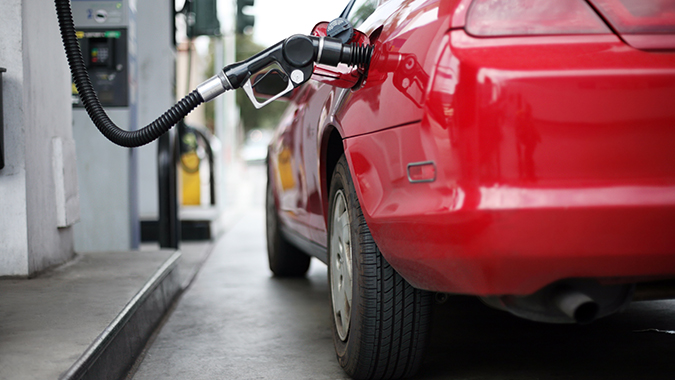After a thorough review of fuel consumption statistics and consultation with the Legislative Budget and Finance Officer, the Department of the Treasury announced today that New Jersey’s gas tax rate will increase by 0.9 cents per gallon beginning October 1 to comport with the 2016 law that requires a steady stream of revenue to support the State’s Transportation Trust Fund (TTF) program.“Because actual consumption in Fiscal Year 2023 was slightly below our projections made last August, primarily due to lower diesel use, and because consumption in the current fiscal year is projected to be just above last fiscal year’s levels, our analysis of the formula dictates a 0.9 cent increase this coming October,” said State Treasurer Elizabeth Maher Muoio.
“As mandated by the 2016 law, this dedicated funding stream continues to provide billions of dollars across the state to support crucial transportation infrastructure needs.”Under the 2016 law (Chapter 56) enacted during the Christie administration, New Jersey’s TTF program is required to provide approximately $16 billion over eight years to support critical infrastructure improvements to the state’s roadways and bridges.
In order to ensure the State has the funds necessary to support these projects, the law dictates that the Petroleum Products Gross Receipt tax rate must be adjusted accordingly to generate roughly $2 billion per year. What is generally called the “gas tax” or the “highway fuels tax” is actually two separate taxes on gasoline and diesel fuel - the Motor Fuels tax and the Petroleum Products Gross Receipts (PPGR) tax.Under the formula explicitly outlined in the 2016 law, the PPGR tax rate will increase on October 1, 2023 from 30.9 cents to 31.8 cents for gasoline and from 34.9 cents to 35.8 cents for diesel fuel. When combined with the Motor Fuels Tax, which is fixed at 10.5 cents for gasoline and 13.5 cents for diesel fuel, the total tax rates that motorists will pay for gasoline and diesel fuel will be 42.3 cents and 49.3 cents, respectively.
Tax Rate Changes Since 2018
| Oct. 2018 | +4.3 cents |
| Oct. 2019 | No Change |
| Oct. 2020 | +9.3 cents |
| Oct. 2021 | -8.3 cents |
| Oct. 2022 | -1.0 cent |
| Oct. 2023 | +0.9 cents |
Background on Chapter 57 & calculation of tax rate formula
Under P.L. 2016, Chapter 57, a statutory formula determines how much the PPGR tax rate is to be adjusted annually in order to meet the Highway Fuels Revenue Target. The Highway Fuels Revenue Target is required to be reviewed annually each August by the Treasurer, in consultation with the Legislative Budget and Finance Officer (LBFO). This process has taken place, with Treasurer Muoio and LBFO Thomas Koenig consulting on consumption data and revenue collections.
In order to calculate whether a change in the PPGR tax rate is necessary to achieve the Highway Fuels Revenue Target, the statutory formula requires Treasury to first look at the baseline Highway Fuels Revenue Target, which is the amount of revenue collected from the taxation of highway fuels (gasoline and diesel fuel) when the law first went into effect in FY2016.
The PPGR rate may be adjusted annually for the following two reasons:
- To correct for the prior fiscal year’s revenue shortfall or surplus in meeting the FY2016 baseline Highway Fuels Revenue Target; and
- To correct for whether projected highway fuels consumption in the current fiscal year will be above or below FY2016 consumption levels.
When necessary, the PPGR rate is adjusted:
- Higher (lower) if revenues last fiscal year were below (above) the revenue target for that year;
- Higher (lower) if consumption for the current fiscal year is projected to be lower (higher) than FY2016 consumption levels.
FY2024 Rate Calculation
Treasury applied the above formula based on the following revenue numbers:
- Highway fuels revenue collections in FY2023 are projected to fall short of the FY2023 Highway Fuels Revenue Target by $8.2 million.
- Additionally, the actual surplus for FY2022 ended up being $5.3 million lower than the $43.1 million surplus that was projected last August. (Highway fuels consumption for the month of June must be estimated every year because the actual data is not available in time for the annual rate review.)
- Based on the consultation between the State Treasurer and the Legislative Budget and Finance Officer during the review period in August 2023, the Highway Fuels Revenue Target for FY2024 is $1.961 billion = $1.948 billion (FY 2016 baseline) + $8.2 million (FY 2023 shortfall) + $5.3 million (FY 2022 adjustment).
Supporting Statistics
Last year, Treasury estimated that consumption of gasoline and diesel fuel in FY2023 was projected to lag by 7.2% from pre-pandemic levels in FY 2019 and 12.2 percent from the FY2016 baseline consumption level when the law was established.
However, because of weaker than expected consumption, gasoline and diesel fuel in FY2023 trailed by 7.6% from pre-pandemic levels in FY 2019 and 12.6 percent from the FY2016 baseline consumption level.
Because actual consumption in FY2023 was below projections, the PPGR tax rate must be increased to make up for the shortfall in highway fuel revenue collections from the prior fiscal year.
While consumption of gasoline and diesel fuel in FY2024 is projected to be 11.3% lower than FY 2016 levels due to remote work and increasing fuel efficiency, it is expected to be 1.4 percent above FY2023 levels.
As a result, the FY2024 PPGR tax rate will be higher than in FY2023 because of the shortfall in prior fiscal year collections and projected low growth in FY2024. The tax rate will continue to be above the original 22.6 cent tax rate because motor fuels consumption remains below base year FY2016 levels.
Treasury also noted that only legislative action can change the statutory formula and any new statutory change would still need to secure reliable annual revenues for the Transportation Trust Fund, the authorization for which expires at the end of the fiscal year.




